
I looked into the web traffic location data for the most visited NFT platforms. Here are the results 👇
[1/5] 16.9% of desktop browser traffic to Opensea comes from the United States. 3.5% comes from Turkey, and 3.4% comes from India. [11.55M monthly visits]
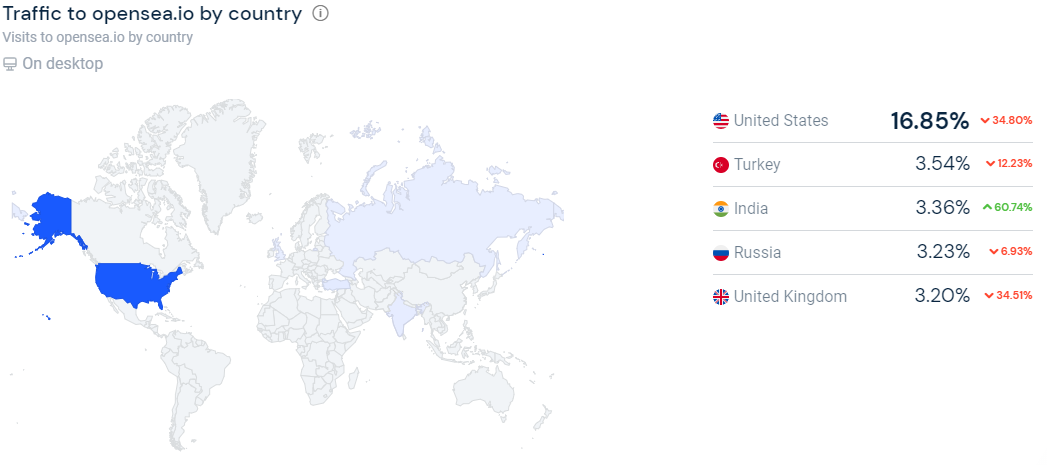
I can hear the uproar already. "NiftyTable!" you bellow in Twitter rage, "what about mobile web traffic!". I agree that mobile traffic is important. However, as a recent survey by @ajv shows, the vast majority of users are making purchases using their desktop browser.
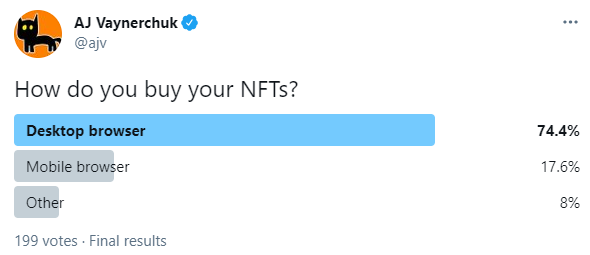
My own survey of NFT artists showed that most creators are minting using their desktop browser.
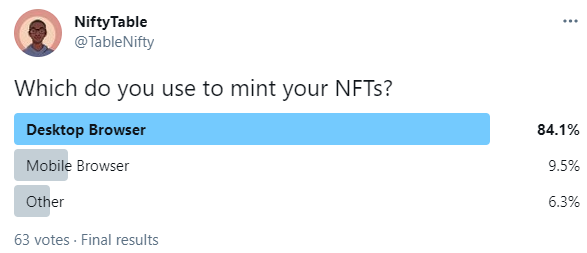
Therefore, the geographic distribution of desktop traffic can serve as a strong indicator of the locality of 𝗮𝗰𝘁𝗶𝘃𝗲 users in the NFT space.
[2/5] 19.7% of desktop browser traffic to Foundation comes from the United States. 6.6% comes from Brazil, and 6% comes from the UK. [6.22M monthly visits]
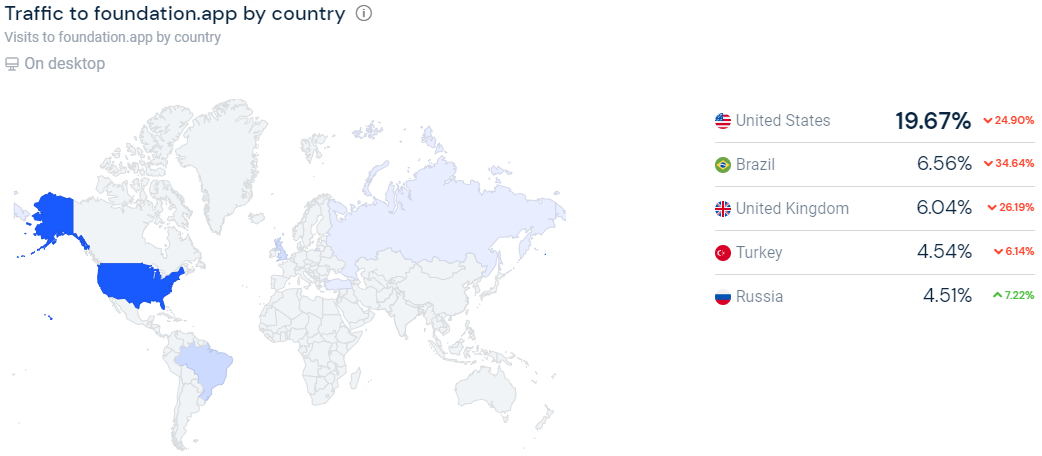
[3/5] 18.2% of desktop browser traffic to Rarible comes from the United States. 9.2% comes from Turkey, and 4% comes from Ukraine. [5.21M monthly visits]
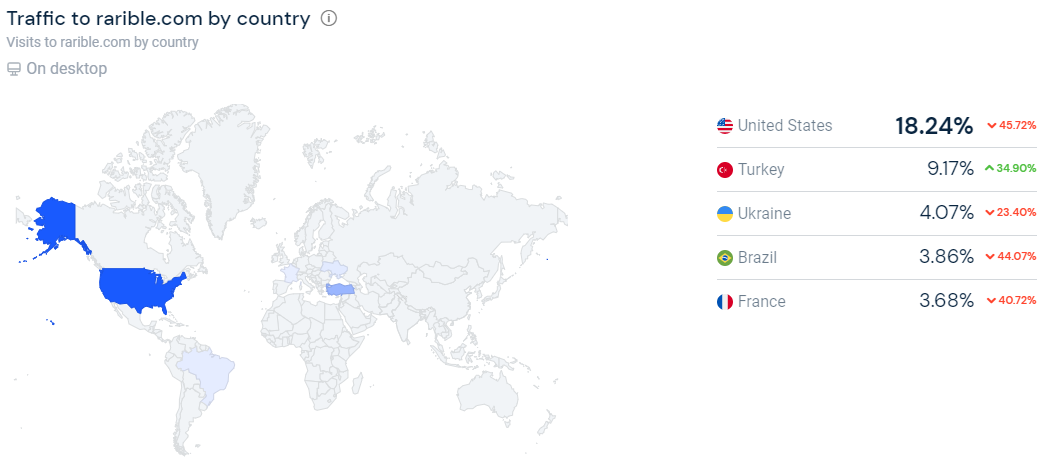
We're starting to see a trend here.

[4/5] 34% of desktop browser traffic to NiftyGateway comes from the United States. 5.5% comes from Canada, and 4.8% comes from the UK. [3.02M monthly visits]
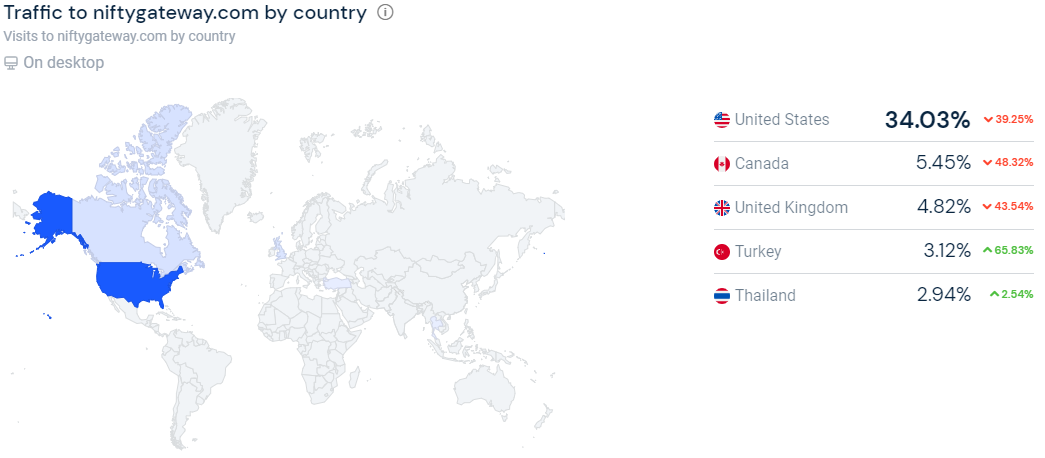
[5/5] 20.8% of desktop browser traffic to MakersPlace comes from the United States. 6.4% comes from Brazil and 6.2% comes from the UK. [1.86M monthly visits]
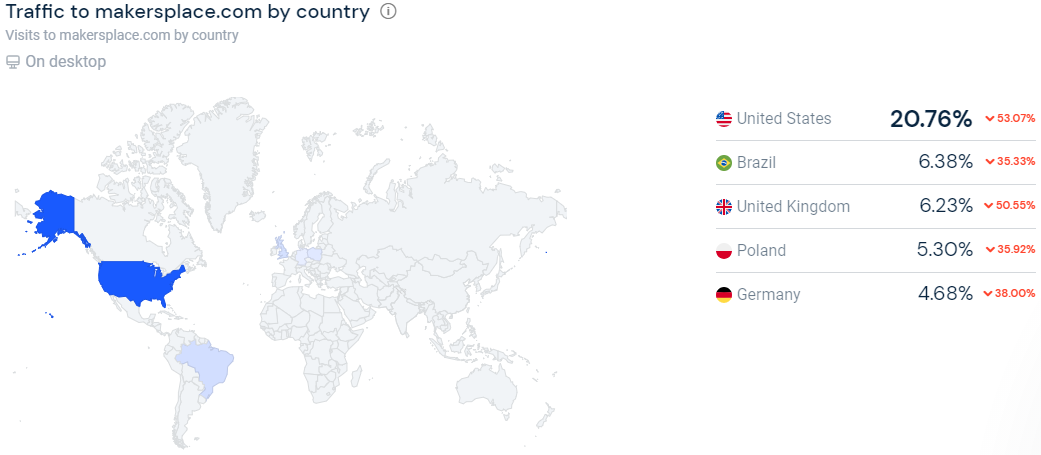
Much like the rest of the crypto space, the NFT market is heavily skewed towards the United States. North American companies run all of the marketplaces mentioned in this list. That being said, there is a strong and rapidly growing contingent of NFT users in Europe and Latin America.
I'm excited to see how the NFT community will expand over time to become more geographically decentralized with larger constituents from South East Asia and Africa. One day, I'd love to see my own home county, Ghana, rank near the top of one of these charts
Hope you found this interesting!
Parameters
Monthly visitors is based on data from April 2021. Monthly visitors includes desktop and mobile
Article of the week
^A guided tour through the history of NFTs.
Credit: @AndrewSteinwold
Poll of the week
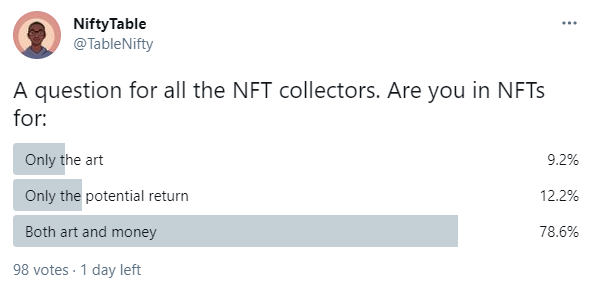
^Based on the feedback, it appears to be the case that artist's trying to succeed in the space long term will have to deliver both 'good' art and good tokenomics.
Support
Thanks for reading! If you enjoyed the article sharing on Twitter is really appreciated:
Where is the average NFT artist and/or collector living? I looked into the web traffic location data for the most visited NFT platforms. Here are the results 👇
— NiftyTable (@TableNifty) May 20, 2021
Forward this to a friend so they can enjoy some refreshing stats! If this was forwarded to you - you can subscribe here –> niftytable.com
If you're super excited about the NFT space and you want to get involved in building products for collectors and creators, check out my new NFT job board at NiftyJobs.io to find all sorts of roles from business operations to software development. The first cohort of listings includes jobs from @aavegotchi, @rabbithole_gg, @SuperRare, and @withFND.
Subscribe to NiftyTable
Subscribe to the newsletter and unlock access to member-only content.
